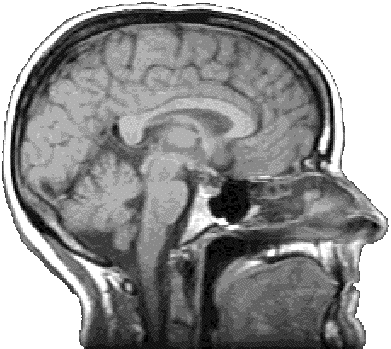
|
Project Overview
- Neural simulator is a useful research tool to model
brain functions by a computer so that we can explore
the parameters much easier than the real brain.
- Neural simulator is an implementation of the mathematical
equations that control the functions of neurons, neural
networks and the brain.
Rationale
- Since we acknowledge the limitations of the human
brain in processing interactions of complex functions,
and its inefficiency in computing mathematical functions,
we delegate these complex, tedious tasks to the job
of the computer, and let it crunch out the number for
us.
- On the contrary, the human brain is very good at
generalizing results and abstracting concepts, we can
accelerate the process of discovery by letting the
computer simulates the results for us to analysis.
- Computational neuroscience essentially is a science
of using the computer's processing power to solve complex
mathematical equations of the brain such that results
can be simplified by human.
- Computational neuroscience also involves using the
same computer to analyze complex data crunched out
by the computer model, using statistical analysis of
these complex interactions, which then allows human
to digest the volume of data created from the simulations.
- This allows us to explore different parameter space
of the mathematical model, and test the hypotheses
of how the brain works numerically.
- It also allows us to study brain functions and behavior,
from cellular level to physiological level to cognitive
and emotional level without sacrificing any details.
- Most importantly, it provides a tool to experiment
with a computer model without using animals.
Research Objectives
- Explore the parameter space of the neural model
- Validate the mathematical model with real biological
data
- Refine the mathematical model iteratively with experimentations
- Abstract the complex interactions among neurons into
simpler conceptual frameworks
- Construct theories and principles of neural processing
in brain functions from the simulation results
Specific Goals
- Develop a generalizeable neural simulator that uses
plug-and-play modular designs to create an extensible
model of the brain built with detailed neural circuitry
- Implement an integrated simulator-analysis computer
program to analyze the simulated data statistically
- Extract the simulation and analysis results into
abstract model of intellectual function of the brain
that is based on known neurophysiological equations
The Challenge
- How to create a generalizeable neural simulator that
spans the level of complexity from cellular level to
physiological level to cognitive/behavioral level
- How the reduce the complexity of the nervous sytem
into a simpler, more intuitive model
- How to abstract complex data into a conceptual model
- How to represent neural information from neural spike
code level into cognitive intellectual knowledge
- How to take advantage of the statistical properties
of the brain for efficient, robust computation and
processing
- How does parallel processing of the brain overcome
the intrinsic slow and limiting power of neuron computing
The Solutions
- For implementation of neural simulator:
- See publication: Tam, D. C. and Hutson, R. K. (1993)
An object-oriented paradigm for the design of realistic
neural simulators. In: Computation Neural Systems.
(F. H. Eeckman and J. M. Bower, eds.) Kluwer Academic
Publishers, Norwell, MA. pp. 115-119.
- See publication: Tam, D. C. (1992) A generalizable
object-oriented neural simulator for reconstructing
functional properties of biological neuronal networks.
Proceedings of the Simulation Technology Conference.
Nov., 1992, pp. 551-555.
- See publication: Tam, D. C. (1992) Object-oriented
programming techniques for implementing generalizable
models. Proceedings of the Simulation Technology Conference.
Nov., 1992, pp. 300-303.
|
